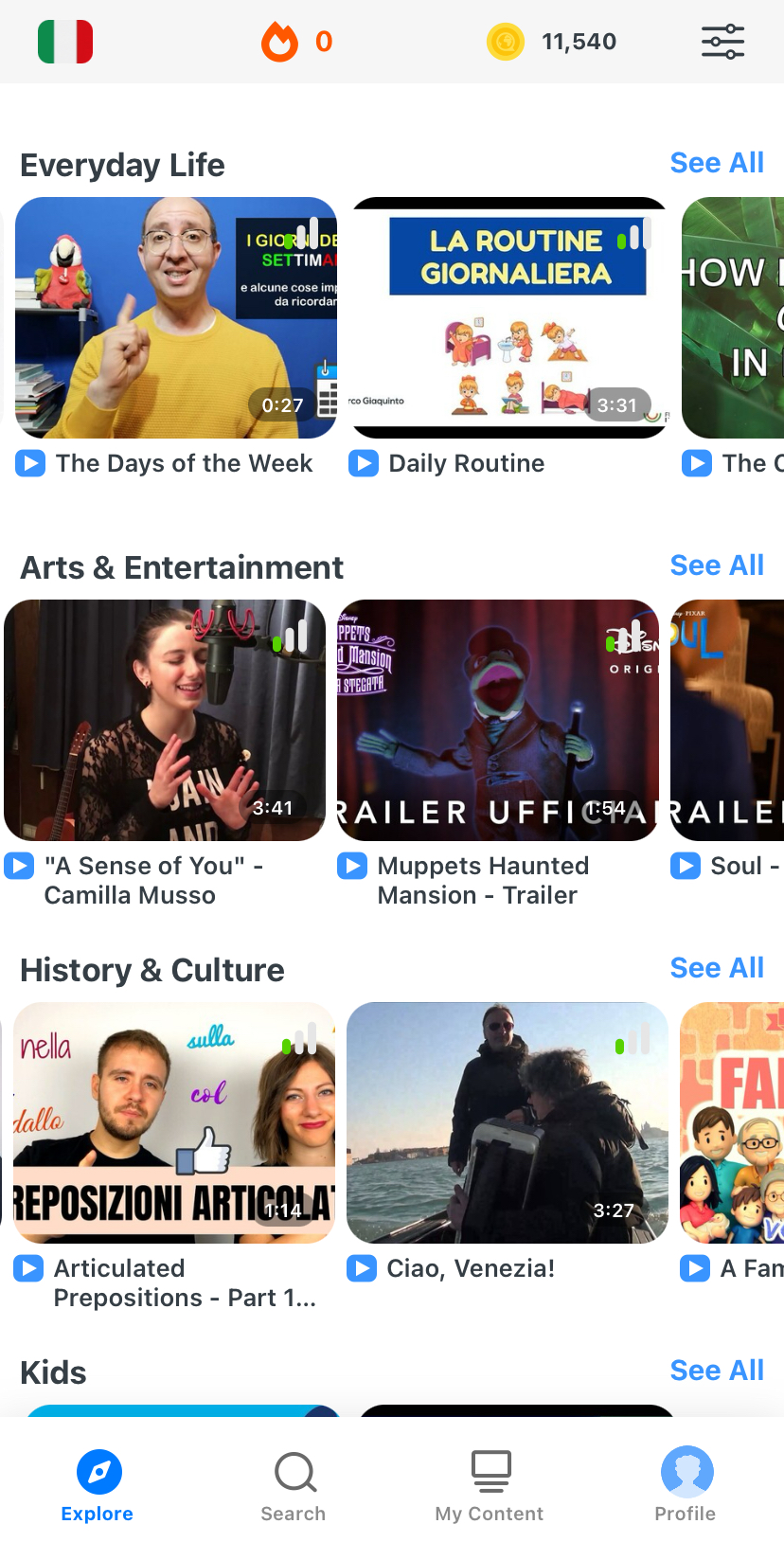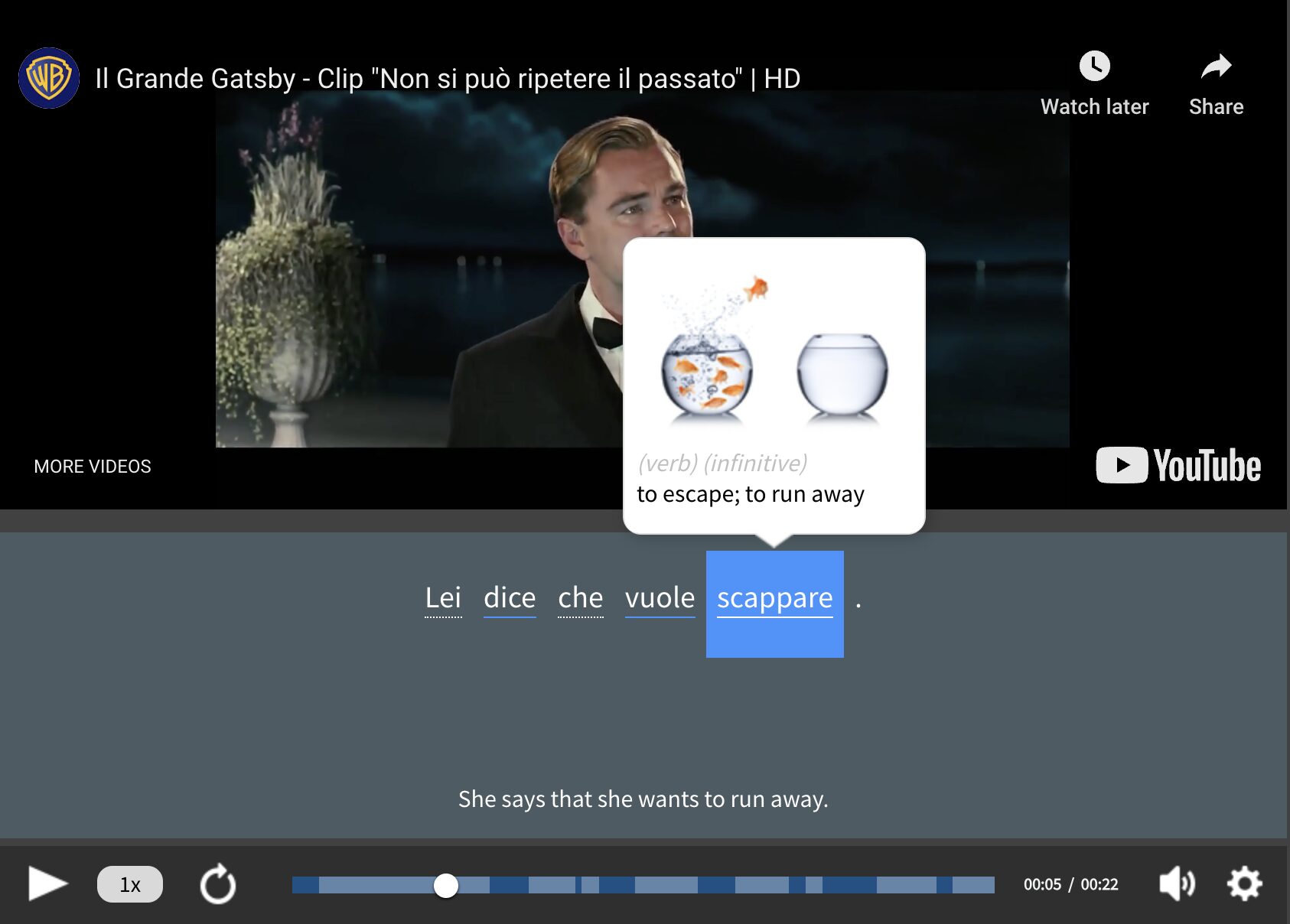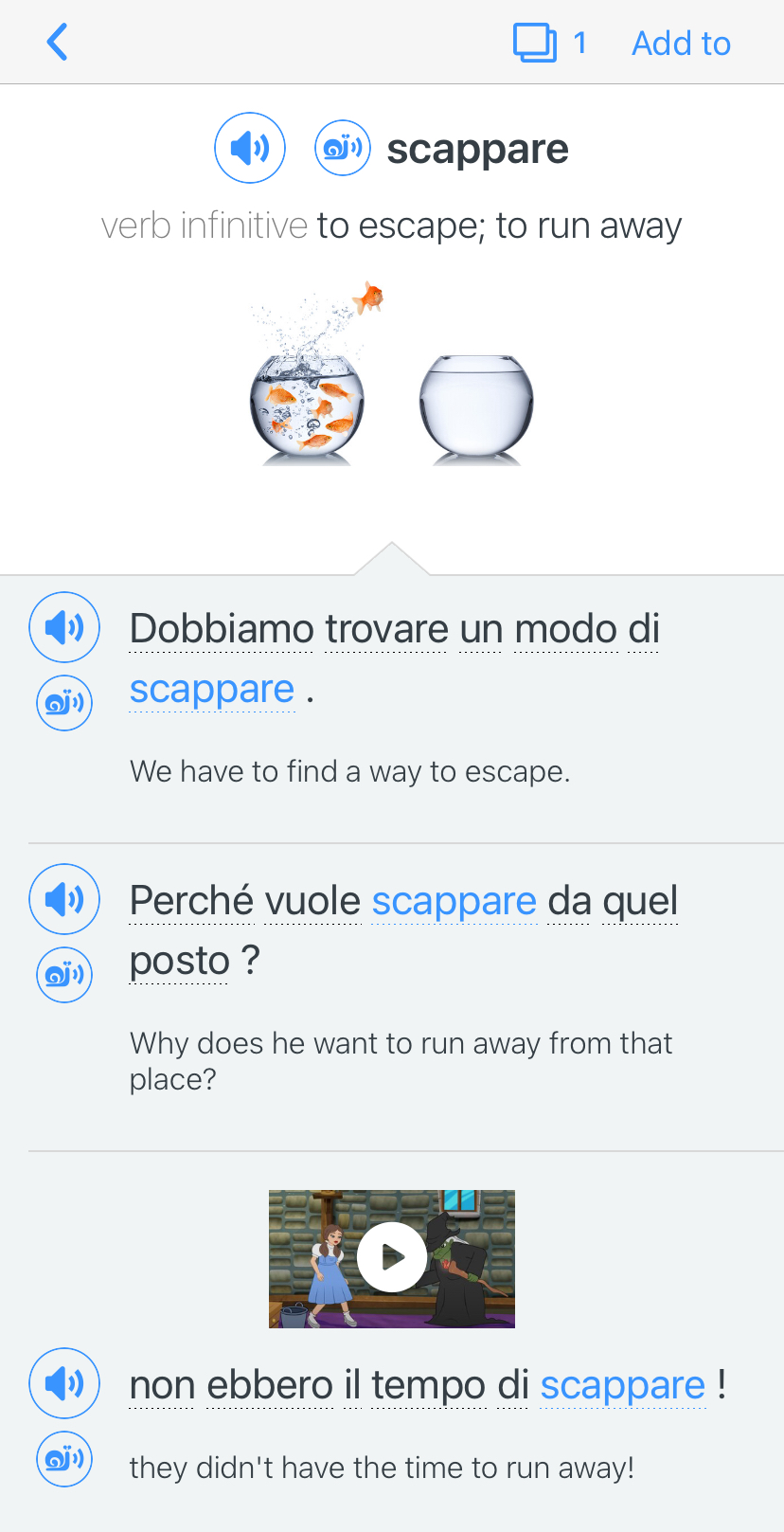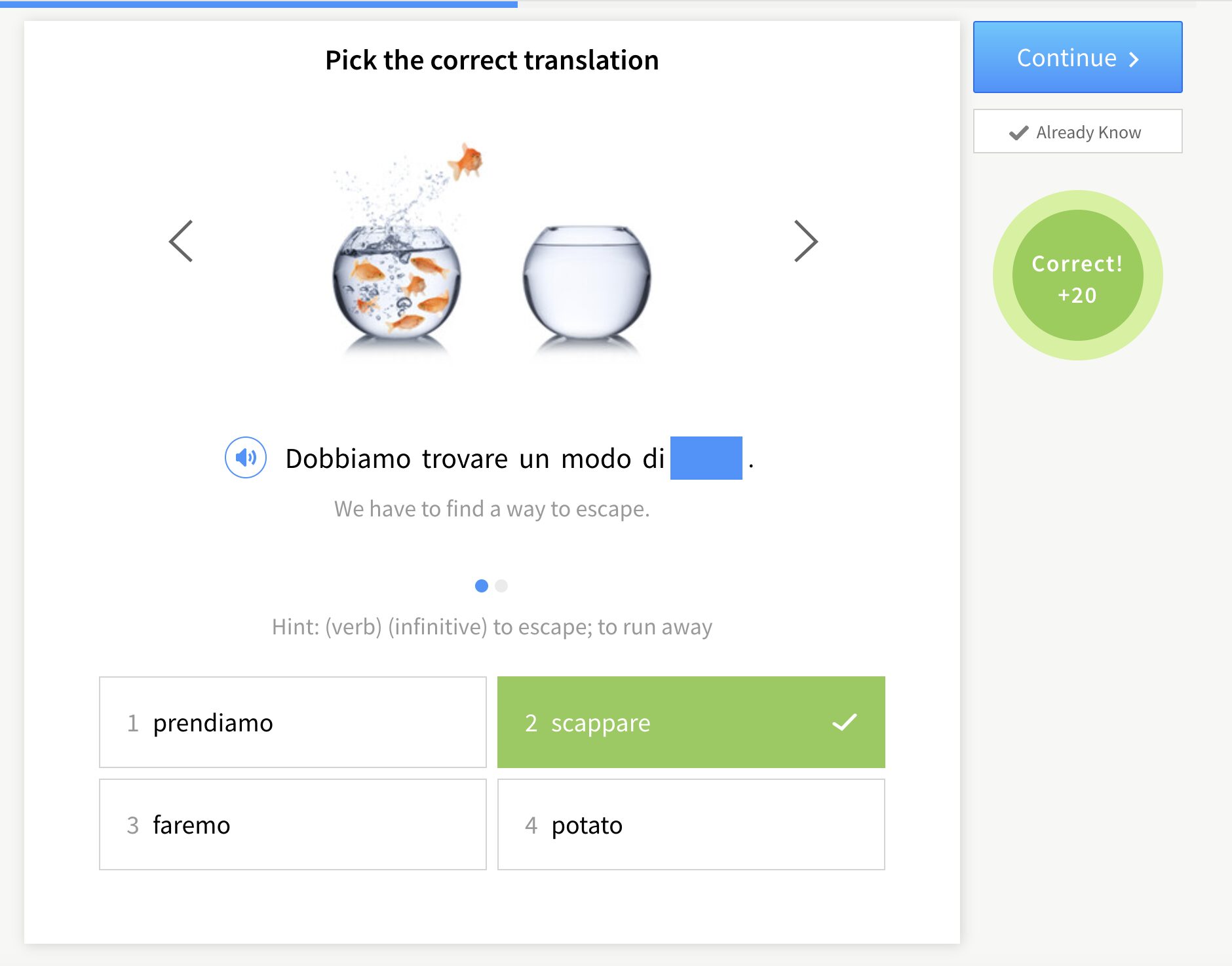Contents
- 1. Start Now and Commit to Daily Italian Practice
- 2. Set Concrete Learning Goals
- 3. Create an Italian Study Plan
- 4. Learn Italian Pronunciation, Especially the Vowels
- 5. Learn Basic Italian Grammar Right Away
- 6. Use Diverse and Interesting Learning Tools
- 7. Study the Most Common Italian Words
- 8. Make Use of Cognates and Synonyms
- 9. Memorize Some Italian Idioms
- 10. Interact with Native Italian Speakers Often
- 11. Write Daily Notes in Italian
- 12. Listen to Italian Content While Doing Mundane Chores
- 13. Change the Language Settings of Your Gadgets to Italian
- 14. Subscribe to Italian Multimedia Content
- How Fast Can You Learn Italian?
- And One More Thing…
How to Learn Italian Fast: 14 Tips

If you’re looking for the fastest way to learn Italian, you’re in the right place. I’ll go over tips for boosting your Italian skills in a hurry, plus some common learning methods and how long you’ll need with each to have a comfortable grasp of your new language.
Take a look at 14 tips for learning Italian quickly below, which will prepare you to master key language concepts and hold real Italian conversations.
Download: This blog post is available as a convenient and portable PDF that you can take anywhere. Click here to get a copy. (Download)
1. Start Now and Commit to Daily Italian Practice
I know that you probably have a busy schedule and a lot of commitments, but if you want to see real results, you’re going to have to study regularly.
Don’t wait for Monday to come around for your fresh start, either. Start now! Even a few minutes per day will get you closer to fluency than none at all.
Need an idea for your daily study? Memorize one Italian verb and its endings every day.
Italian is very verb-centric, which means you can’t do much without knowing a lot of verbs. Where English uses a lot of compound and phrasal verbs (get up, get in, get dressed), Italian typically has a different verb for everything (alzarsi, entrare, vestirsi).
I recommend that you get a calendar and write one verb for every day of the month. Each morning, write down the verb and repeat it in its present forms. Try to memorize the verb by the end of the day. At the end of the week, quiz yourself on your new words.
2. Set Concrete Learning Goals
Setting concrete goals is one the most important ways to stay motivated and feel successful in language learning.
Instead of the big, vague, overwhelming goal of Italian fluency, pick smaller, specific achievements you can progress through. Here are some questions to ask yourself:
- How much time can you devote daily to Italian learning? Where do you want to be in a week? A month? A year?
- What type of communication is important to you? Do you just want to watch Italian TV shows without subtitles, or do you need to deliver professional presentations?
- Which parts of the language give you the most trouble? Do you struggle with verb conjugations or vowel pronunciations, for instance?
Plan interesting, fun, accessible goals based on your answers. Sit down, open a notebook and write down those goals so you can remind yourself why you’re learning when studying feels difficult!
3. Create an Italian Study Plan

Luckily, there’s no shortage of Italian materials and courses out there. As one of the most studied languages in the world, Italian is in high demand—which makes it that much easier to plan out your studies.
If you want to see results soon and be consistent, create a realistic study plan for yourself. You can:
- Determine a specific time commitment. Decide how many hours per week you want to dedicate to studying Italian. For faster results, try to aim for at least an hour each day, if not more.
- Set up a daily study routine. Pick a time of day that works best for you. It can be before you go to work, during your lunch break, after work—or multiple times a day!
- Stick to your schedule. Try not to skip any learning sessions. Success doesn’t happen overnight. Consistency is the key to learning any language, Italian included.
4. Learn Italian Pronunciation, Especially the Vowels
Make sure you spend enough time at the beginning of your learning journey to master the Italian alphabet and perfect your Italian pronunciation.
As for a pronunciation tip that’ll put you ahead of the curve: Focus on the vowels.
Vowels in English are known for being confusing because they can be pronounced in a variety of ways. Italian vowels, on the other hand, are pretty straightforward. Each letter has only one sound.
Take the verb pretendere (to expect/command). This verb contains the same vowel four times. Native English speakers will likely want to pronounce the word something like pree-ten-dur.
But once you know the Italian “e” is always pronounced eh, you’ll be able to pronounce pretendere correctly.
Memorizing the Italian alphabet and paying special attention to the vowels will improve your pronunciation dramatically.
5. Learn Basic Italian Grammar Right Away
While Italian grammar can be quite complex, the trick is to start by learning the simple stuff. Give yourself a strong foundation for your Italian studies while boosting your confidence and motivation.
Start by learning to build simple sentences. Then, focus on the simple tenses, prepositions and pronouns to make quick progress:
- To learn Italian verbs, start with the indicativo (indicative) mood and the present tense, the past simple and the future simple.
- When learning Italian prepositions, stick with le preposizioni semplici (simple prepositions) at the beginning.
- For Italian pronouns, begin with the three most common: subject pronouns, pronomi diretti e indiretti (direct and indirect pronouns).
And once you think you’ve got the basics of Italian grammar down, you can practice with grammar exercises through these resources.
6. Use Diverse and Interesting Learning Tools
Your Italian learning tools will depend upon your personal interests, learning style and goals. No matter your preferences, however, you’ll probably benefit from a mix of the following types of study materials:
- Straightforward, textbook-style learning tools. That might mean anything from actual textbooks to online Italian grammar tutorials. Find something practical that explains essential Italian language concepts to you.
- Authentic, entertaining resources. You might listen to Italian learning podcasts, download fun language apps or read Italian magazines. You could subscribe to Italian blogs or watch Italian movies. Think about what naturally holds your attention, and then do it in Italian.
In fact, multimedia materials like movies or TV shows are especially helpful for learning Italian quickly. These types of immersive resources will show you how native speakers really use the language, so you can start sounding like a native yourself.
Of course, as a beginner, a full-length movie or TV series might seem intimidating. If that’s the case, you can try learning more Italian with online immersion platforms, such as FluentU.
FluentU takes authentic videos—like music videos, movie trailers, news and inspiring talks—and turns them into personalized language learning lessons.
You can try FluentU for free for 2 weeks. Check out the website or download the iOS app or Android app.
P.S. Click here to take advantage of our current sale! (Expires at the end of this month.)
7. Study the Most Common Italian Words
Vocabulary—it’s extremely important, but sometimes it’s just so difficult to remember all those new words, isn’t it?
If you want to expand your vocabulary quickly, learn the most frequently used Italian words. This will make the most efficient use of your time and quickly prepare you to start having Italian conversations.
In fact, 90 percent of the vocabulary used by native Italian speakers in everyday conversation is composed of about 2,000 words. You can find those words in the first section of this Memrise resource.
Once you’ve learned the words, make sure to practice using them in context. Try to come up with different phrases for each word—that way you’ll not only remember them, but you’ll also learn some extra vocabulary.
Keep a vocabulary notebook in your bag and add new words or phrases whenever you have a little extra time.
8. Make Use of Cognates and Synonyms
Cognates are words that have the same meaning and the same (or very similar) spelling in two different languages.
Italian and English have a lot of cognates, so that’s a great way to get started or boost your Italian vocabulary skills.
For example, most words that end with “-tion” in English are cognates in Italian. The spelling is extremely similar—just change the English ending to -zione (singular) or -zioni (plural) and you’re all set.
Take a look:
- Destinazione (Destination)
- Destinazioni (Destinations)
- Intenzione (Intention)
- Intenzioni (Intentions)
Beyond the multitude of cognates, Italian synonyms are another great way to expand your vocabulary.
The Italian language has more than 260,000 words, including many synonyms that can be harnessed for rapid learning. Instead of learning only one way to express yourself in Italian, you can learn three or four at once. Not bad, right?
Check out this list of common Italian synonyms, and then look up new vocabulary words in an Italian dictionary for a list of other usable words with the same meaning.
9. Memorize Some Italian Idioms
Idioms aren’t commonly taught until you reach more advanced language levels, despite the fact that they’re one of the most fun parts of learning a new language!
The truth is that you can start learning Italian idioms right away. In fact, doing so will help your Italian improve faster.
That’s because memorizing fun phrases like in bocca al lupo (break a leg/good luck) or una mela al giorno toglie il medico di torno (an apple a day keeps the doctor away) helps you internalize Italian grammar structures.
If you learn some Italian idioms, you’ll realize as you continue your studies that you’ve already been using some of the grammar you’re starting to see in your book or course.
Even better, this means you’ll understand the real-world application of Italian idioms and how to use them like a native speaker.
10. Interact with Native Italian Speakers Often
If you really want to learn Italian fast, then you have to expose yourself to the language as much as possible. The fastest way to do this is to move to Italy and totally immerse yourself in the language and culture.
Of course, that’s not possible for most language students—and you certainly don’t have to do it to learn Italian quickly!
The key is to interact with native Italian speakers as much as possible.
For starters, attend meetings or events in Italian. There are Italian communities all over the world—you can find one near you by searching the National Italian American Foundation affiliates, this list of Italian American organizations or Italian Meetup groups in your area.
Events held by organizations like those will teach you a lot about Italian language and culture, provide you with opportunities to meet native speakers and other learners and practice your language skills live and in person.
Before going to events, look up some Italian vocabulary related to the place or activity. You’ll then be able to understand the native speakers better, and you’ll feel more confident in your own Italian abilities so you can chime in to the discussions yourself.
11. Write Daily Notes in Italian
Have an Italian notebook that you carry around. This is where you’ll write the bits and pieces of Italian information that you encounter daily. Here are some scenarios you might use it for:
- You’re watching an Italian classic film and you hear an unfamiliar word. Write it down so you can Google it later.
- You’re watching an Italian grammar lesson on YouTube. Write down any new rules you learn that you would otherwise forget.
- You’re reading long sections of an Italian textbook. Summarize what you’re learning in your notebook so it doesn’t go in one ear and out the other.
- You’re unwinding after a long day. Write down a diary entry for the day for some informal Italian practice.
Do this on a daily basis and your notebook will soon contain the most personally interesting and instructive information about the language.
But it’s not just about documenting your Italian learning. The act of writing itself is highly beneficial for language learners. It bolsters the learning process. Researchers have found that there’s just something about the act of writing, the specific strokes creating words on paper, that makes the brain remember more.
12. Listen to Italian Content While Doing Mundane Chores
Every day, we have little tasks that really don’t require that much focused attention—like waiting in line at the ATM, being stuck in heavy traffic, doing the dishes or standing on a commuter train.
Instead of just listening to music tracks and beats on your phone, you can utilize these little bits of time for learning Italian.
Listen to Italian music instead. There are language lessons to be picked up from listening to songs in the target language. They not only attune your brain to the cadences of the Italian language, they can provide melodic context to words and phrases, making them easier to digest.
Or if you’d like to improve your listening comprehension while also enjoying a good story, you can download an audiobook in Italian to your iPhone or other portable player.
13. Change the Language Settings of Your Gadgets to Italian
I’m guessing that you’re using your smartphone, laptop and other gadgets on a daily basis. One of the quickest ways to have regular language immersion (without even trying) is to change the language settings of your gadgets to Italian.
In order to do this, you’ll need to open your device’s settings, go to the language section and pick Italiano (Italian) from the list. Now, at first, you’ll feel a sudden urge to undo what you’ve just done and go back to English. Resist this urge.
The beauty of this trick is that it gradually teaches you to think in the target language. As you use your device and apps, you’ll recognize words like completato (completed), notifiche (notifications) and annulla (cancel). You’ll ultimately be able to navigate your smartphone like any native speaker.
And while you’re at it, why not change the language settings of your social media accounts into Italian? Imagine: Twitter, Facebook and Instagram, all in Italian.
14. Subscribe to Italian Multimedia Content
Today’s internet is every language learner’s dream. Never have people been so blessed with so much multimedia content to choose from. All you need to do is pick resources that resonate with you.
With YouTube alone, you have great picks, from language lessons and grammar insights, to food and travel vlogs that will satisfy your Italian fix. For example, subscribe to ItalianPod101 and access hundreds of language lessons that teach you a wide range of subjects including Italian phrases, greetings and manners. Their videos are professionally produced and come with helpful pictures and graphics.
You could also check out the FluentU Italian YouTube channel, where you can watch videos like this one:
How Fast Can You Learn Italian?
To get to a solid high-intermediate to advanced level, where you feel comfortable holding normal conversations and doing everyday tasks in Italian, learning times can range from a few months to several years.
Here’s how common language learning methods compare.
- Total Immersion — Three months — This is the most intense option for learning Italian, but it has the best and quickest results. Total immersion typically means moving to Italy. For instance, you can take part in immersive language learning programs in Italy where you’ll probably need to study a minimum of four hours per day.
- Intensive Group Course — One year — Taking an intensive group course at home is the next best thing to immersion. This type of study usually requires about six hours of lessons per week, plus homework. It forces you to make Italian part of your everyday life, which is the most essential factor for learning Italian quickly.
- Standard Group Course — Four years — Taking a non-intensive group course is one of the more affordable and least time-consuming ways to study Italian seriously. This type of language learning usually includes about three hours in the classroom each week, as well as homework.
- Individual Lessons — In reality, you could learn much faster with individual lessons. It really depends on how many hours you do each week. With one 90-minute lesson per week, you could likely learn Italian to a decently high level in about four years.
- Online Lessons — You’ll find many high-quality courses aimed at beginning Italian students, like this one from Online Italian Club. These can be relaxed and convenient, but are less conducive to speedy learning.
- Self Study — Many people succeed at learning Italian through self-study methods, but how long that takes depends completely on you. This is usually the cheapest way to learn, but it can also be extremely challenging without support and motivation from a teacher or classmates.
Ready to take your Italian to the next level? Start putting these tips into practice and be consistent.
You’ll become a master of Italian in no time!
Download: This blog post is available as a convenient and portable PDF that you can take anywhere. Click here to get a copy. (Download)
And One More Thing…
If you’re like me and prefer learning Italian on your own time, from the comfort of your smart device, I’ve got something you’ll love.
With FluentU’s Chrome Extension, you can turn any YouTube or Netflix video with subtitles into an interactive language lesson. That means you can learn Italian from real-world content, just as native speakers actually use it.
You can even import your favorite YouTube videos into your FluentU account. If you’re not sure where to start, check out our curated library of videos that are handpicked for beginners and intermediate learners, as you can see here:
FluentU brings native Italian videos within reach. With interactive captions, you can hover over any word to see its meaning along with an image, audio pronunciation, and grammatical information.
Click on a word to see example sentences and other videos where it's used in different contexts, then add it to your flashcards. For example, if I tap on the word "scappare," this is what pops up:
Want to make sure you remember what you've learned? We’ve got you covered. Each video comes with exercises to review and reinforce key vocab. You’ll get extra practice with tricky words and be reminded when it’s time to review so nothing slips through the cracks.
The best part? FluentU tracks everything you’re learning and uses that to create a personalized experience just for you. Start using the FluentU website on your computer or tablet or, better yet, download our app from the App Store or Google Play.
Click here to take advantage of our current sale! (Expires at the end of this month.)















